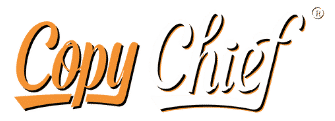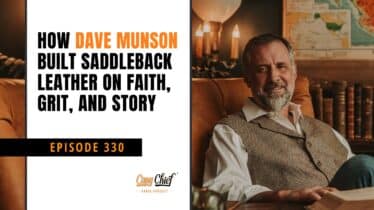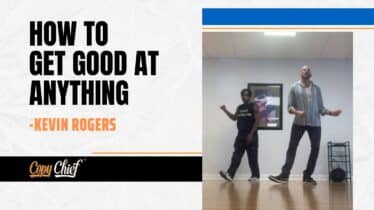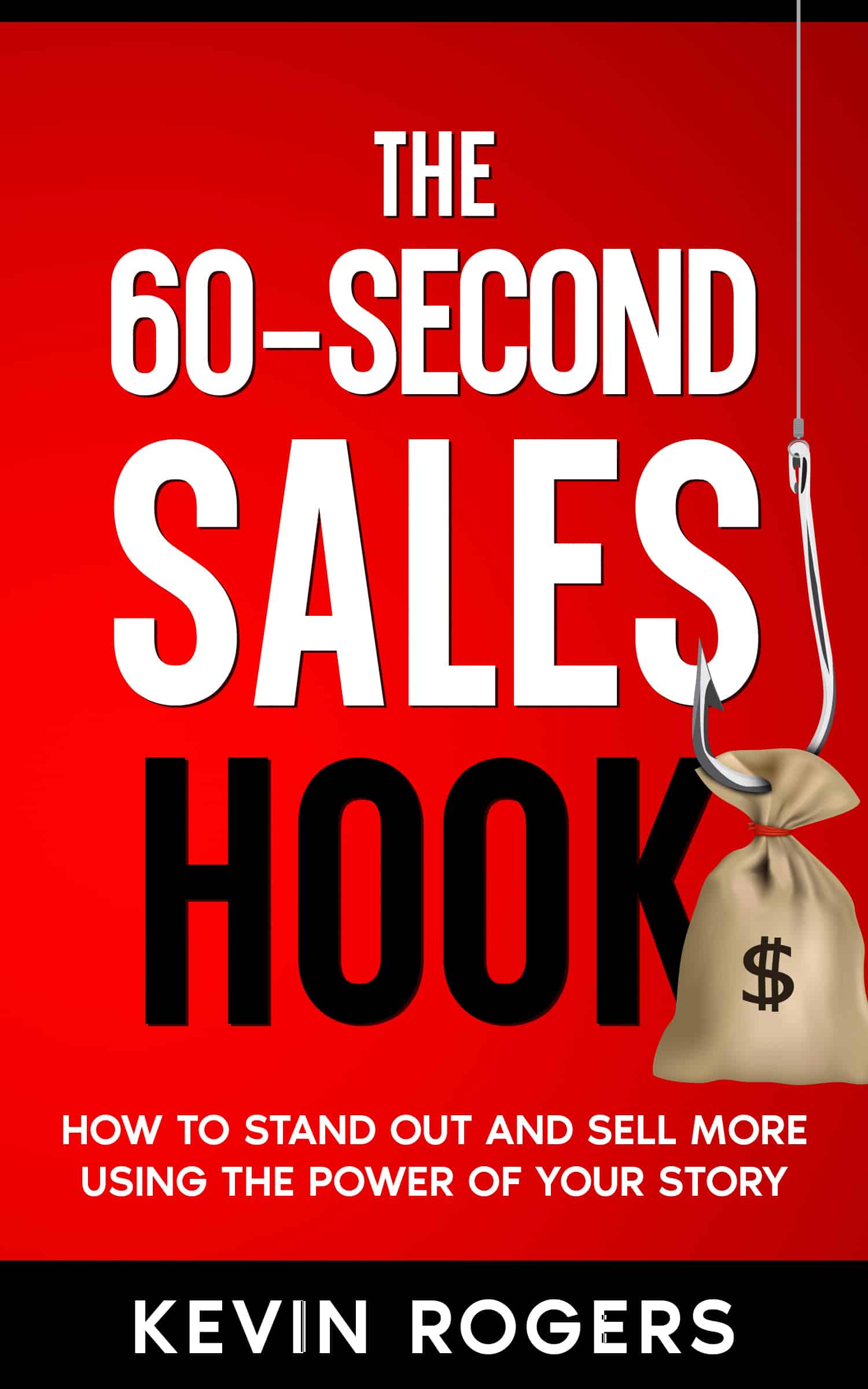“Story sells…”
“Your customers connect with stories, not features and benefits…”
“Thou shalt not bore thy customers…”
If you study sales copy, you’ve no doubt heard variations of the above…that you should be telling stories. Stories are what people remember, and the way to your audience’s heart.
And you can probably name at least two or three businesses or marketers who use stories really well. Their emails are so interesting that you look forward to opening them. If they were somehow filtered out of your inbox, you’d be like, “Hey, where’s THAT guy? Put me back on your list, dude!”
But how do they write such entertaining, sales-driving stories? Are some people just exceptional writers? Do they have these super-interesting lives full of entertaining stories that just so happen to make for great sales copy?
Nah. It’s all engineered. And it’s not hard at all.
In fact, you can do this even if you aren’t a professional copywriter…
And even if you think nothing interesting ever happens to you. (Hey, I’m a total introvert who loves organic gardening and rewatching The Sopranos on Netflix, so if I can do it, so can you.)
So today, I’m going to show you a really easy template you can use to turn your personal stories into sales machines.
Now, when I do this, I start one of two ways:
- Start of the story, OR…
- Start with the message
Today we’re going to talk about starting with the story, as I think it’s the easier of the two. If there’s a lot of interest in this, maybe The Chief will have me back for a follow-up.
Start with the Story
A couple of months ago, I bought a pair of jeans off of eBay.
When the jeans arrived, I noticed that they weren’t the size advertised. So I contacted the seller to let her know, and she started the refund process.
It was all downhill from there.
Because of the way that she processed the return, I couldn’t access the return label. But rather than looking into the situation to figure out what was wrong, she continually blamed me, saying that I took too long to return the item, even though I was well within the return period.
According to her, this was all my fault, and I needed to straighten it out with eBay. She got pretty nutty. (Although on my end, I was thinking, “This is going to be a great sales email.”)
We all have stories like that one.
It could be something scary that happened to you. Something frustrating. Something hilariously funny. Something exciting. Something that made you feel dumb.
It could be a story about a new restaurant you tried. The gym you work out every morning. Your cat. Your crazy next-door neighbor.
You might not think these things are interesting, but think about all of the other emails that hit your inbox:
- “Final chance to get 20% off!”
- “You don’t want to miss this deal!”
- Your FREE gift inside
Blah, blah, blah. And your customers are seeing the same junk in THEIR inboxes.
So when YOUR email arrives and you’re talking about how you got into a fight with someone, it stands out. It’s interesting because it’s different, and it’s personal. And the more you do it, the more your audience starts to feel like they know you.
Now, there’s one problem with this…maybe you’ve spotted it…
No One Likes a Narcissist
At this point, you might be thinking, “That sounds like it’s all about you, you, you…and sales copy is supposed to be all about them, them, them. They don’t care about YOU and your dumb jeans, April.”
(Sniffle. I’ll hold back my Claire Danes cry face…)
It’s a fair point, though. No one cares about the random things that happen to me…until I make it about them.
Whoa! Jedi mind tricks!
Okay, not really. Let’s go back to my eBay example to see how I do this…
How to Make Your Stories about Them
To make my story relevant to my audience, I first thought about all of the possible angles for that eBay story, like:
- A customer service lesson: Work with your customer (instead of blaming them)
- The importance of systems (like a checklist for correctly processing returns)
- How you shouldn’t ask your customers to do your work for you (like how she insisted that I would need to resolve this problem with eBay)
Now I probably could’ve come up with more angles. However the third one was a good fit for my business, which is about sales copy and direct marketing.
I’ll explain: In sales copy, any extra work you create for your customer creates friction, and friction lowers your conversion rate.
For instance, let’s say that you send an email asking your audience to review your podcast in iTunes. Only you expect them to just go to your iTunes review page on their own.
But most people won’t bother going to iTunes and searching for your review page. Or they’ll think, “I’ll do it later…”
However, if you did the work FOR them, by creating a direct link to the iTunes review page and including that in your email, your conversion rate will increase. Less friction, more conversions.
Okay, so now we have a personal story: my experience with the eBay seller.
And we have the message that’s relevant to my audience: eliminating friction, specifically, in your sales copy.
Next, you connect the story to the message with a transition.
You don’t have to be terribly creative with transitions. It can be something as simple as, “So, why am I telling you all of this?”
Or, “Now here’s the reason this is important…”
Or, “Alright, so what does any of this have to do with sales copy?”
Then follow that transition with your message, which we’ve already developed.
Okay, so we’re almost done. We just need some finishing touches…
How to Wrap It Up and Get the Sale/Conversion
Now we’re getting to the end of the email.
I like to tie the ending of the email back to the personal story. This is something that I learned back when I was a magazine journalism student.
It’s kinda basic, even trite, but human beings really dig it when the ending of a story connects to the beginning. It’s just satisfying.
Plus, from a sales copy perspective, doing this will remind them of the memorable, entertaining story again, searing it into their brains.
So to tie the ending back to the beginning, I save the resolution of the story for the very end. Or, if not the resolution, some additional fact.
In this case, I wrote:
“9 times outta 10, [your customers are] not gonna do any of it. Just like *I* wasn’t going to waste my time dealing with eBay customer service on behalf of Crazy eBay Lady. (Btw, I would’ve gladly mailed the jeans back to her, but once eBay ruled that it was her error, she cut off all communication with me!)”
And last, but not at all least, we have the call-to-action (CTA).
This is the action you want them to take. It could be to buy your product, to fill out your intake form, to take a survey, or even just to watch a particular video on YouTube.
Whatever it is, I always write a CTA that’s related to the message of the email.
So in my eBay example, the CTA was for a sales copy review, which will show them where there’s friction hiding in their own sales copy and how to correct it.
Because the message of the email is about reducing friction, this CTA tied in nicely.
All Together Now…
Okay, so here’s the email, in its entirety. As you read it, see if you can you spot the five parts we’ve talked about: the story, the transition, the message, the resolution, and the CTA.
Subject: That time I got into an eBay fight
So, there I was, on eBay.
And I found the holy grail: My beloved discontinued jeans in my exact size, in my favorite wash, basically brand new.
Only $23? Shut the front door–sold!
But when they arrived, I could barely get them past my thighs. What the…?
This can’t be right. I’d been doing HIIT cardio THREE days a week, y’all!
And that’s when I checked the label–they were two sizes smaller than advertised. I contacted the seller, and I received a refund and a link to begin the return process.
But when I clicked that link, I was taken to a page that said: “This return is now completed…You don’t need to return this item to the seller–you can keep the item.” Uh, okay. Guess we’re done.
Days later, I get an email from the seller, demanding to know why I hadn’t returned the jeans. I told her what happened. I sent a screencap of the message from eBay.
Her response: “I would have explicitly told you I didn’t need them returned if that was the case. Please let me know when they are in the mail.”
Hey Crazy, you don’t seem to understand. I can’t return them without the label.
“Ok,” she said. “You need to eBay directly–there seems to be an issue on your end. It may be because you waited so long to print it out…”
Ha! This chick was funny. And wrong–eBay determined the whole thing was her fault.
Anyway, lots of customer service lessons in there… (Like maybe give your customer the benefit of the doubt…)
However, the COPY lesson in the story is this: Do not expect your customers to do your work for you.
In sales copy, any extra work you create for your customers is going to cost you sales.
That might look like an opt-in form that has seven different fields they have to fill out, rather than taking the time to edit it down to one or two fields…
Or asking them to review your podcast in iTunes, and not creating a link that takes them DIRECTLY to the review page…
Or assuming that they’ve read every email in your autoresponder, forcing them to “dig” for key information they’ve missed…
9 times outta 10, they’re not gonna do any of it.
Just like *I* wasn’t going to waste my time dealing with eBay customer service on behalf of Crazy eBay Lady. (Btw, I would’ve gladly mailed the jeans back to her, but once eBay ruled that it was her error, she cut off all communication with me!)
It’s OUR job–and the job of our sales copy–to make life easy for our customers.
So easy that they not only buy what you’re selling today, but then come back and buy your next product, too.
-April
P.S. Can you spot the friction in YOUR sales copy? If you’d like another set of eyes on it, contact me for a sales copy review here.
At first it might take you a little while to write an email like this. But the more you flex those personal story muscles, the easier it’ll get to turn anything that you see or do into great sales copy.
(And btw, if you’d like some grey Madewell jeans, size 25, I have a pair I’d be happy to send to you. I’m just gonna need a shipping label…)
Alright, I’m turning this over to you now. But I’m not just gonna slap you on the rear with a “Go get ‘em, Tiger!”
Instead, I’ve created five FREE email templates that will help you turn your personal stories into emails that sell, using the system I’ve outlined here. It includes five story prompts, along with exactly how to connect those stories to your products and services.
While it’s aimed at health and wellness entrepreneurs, anyone can profit from these email templates.
Get your free copy of the five email templates right here.
April Dykman helps health entrepreneurs grow their businesses with customer-focused sales copy and funnel strategy. Find her at CopySprout.com.







